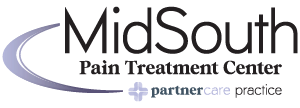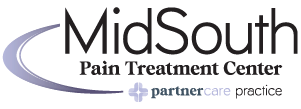A herniated lumbar disc is a painful condition that millions of Americans suffer from every single year.
So how does it happen? And, more importantly, how can you treat it?
The truth is, while a herniated lumbar disc can be a tough problem to overcome, surgery should only be your very last resort. Here is everything you need to know about what a herniated lumbar disc is, how to know if you have it, and what you can do next.
What Is a Herniated Lumbar Disc?
Between each of the vertebrae along your spine, there are jelly-like discs that work to hold those bones in place. A herniated disc refers to a disc that has slipped out of place and is protruding from the spine. A herniated lumbar disc can have several painful consequences. It can irritate the nerves along your spine, causing jolts of pain and even numbness and weakness in your back, leaving you prone to further injury.
Injury or trauma to the spine can cause a herniated disc. However, most often, a herniated disc is the result of degeneration of the spine as a patient ages. Herniated discs occur most often in the lower spine and are more frequent among men than women. Individuals aged 35 to 55 are more likely to suffer the effects of a herniated disc than younger individuals. Weight, genetics and physically demanding jobs can also play a role in the development of a herniated disc.
What Are the Symptoms of a Herniated Disc?
Because millions of people suffer from back pain, it can be difficult to determine whether your pain is regular muscle ache or a herniated disc. Here are some symptoms to look out for that may require that you meet with a medical professional:
Pain in the legs or arms: A herniated disc will normally send pain radiating down your buttock and all the way along your leg. It can also cause pain in your neck, shoulders or arms.
Numbness: If you feel numbness around your spine, arms or legs, you may be dealing with a herniated disc. The pressure on the surrounding nerves can cause numbness around the affected area and require treatment to improve and restore the nerves.
Muscle weakness: If you notice your arms or legs to be abnormally weak, you may be suffering from a herniated lumbar disc. If your muscles buckle under light pressure – for example, you find yourself slipping, losing balance, or dropping things more often – your muscles may be suffering from the stress of a herniated disc.
If you are experiencing these symptoms, it’s important to meet with a health practitioner today to discuss your options. Request an appointment with one of our qualified staff members today to discuss your options and get more information on the best treatment options for you.
How to Treat a Herniated Lumbar Disc
There are several ways to treat a herniated disc without resorting to surgery. Here are a few options, all of which are available at MidSouth Pain:
Epidural Steroid Injections: This treatment is most effective for mild to moderate, intermittent pain. It is a non-invasive procedure that allows steroid treatment to reduce inflammation of the ruptured (or herniated) disc. It can allow patients to feel much less discomfort, giving them the opportunity to stretch and exercise the affected areas more easily.
Radiofrequency Ablation: This minimally invasive procedure focuses on interrupting the pain signal transmitted from the nerves to the brain. Because a herniated disc can be an irreversible condition, controlling the pain is a key strategy for relief in most patients. It is especially effective with lower back pain, like that caused by a herniated lumbar disc.
Spinal Cord Stimulation: This treatment has the same focus as radiofrequency ablation, but it works by sending an electrical pulse to the nerves to stimulate them and block pain receptors from traveling to the brain. MidSouth Pain offers HF10 Therapy, which is the latest technology in spinal cord stimulation. It is paresthesia-free and has been proven to provide the best results.
When Is It Time to Consider Surgery?
Only after you have exhausted all other options should you even begin to consider a herniated disc surgery. It is important to keep in mind that 40% of back surgery patients report a failed surgery that either did not solve the problem or, in some cases, worsened it. Another point to remember is that a herniated disc is not something you can “cure” – not even with surgery. The main issue with a herniated disc is the pain it causes. Most back pain experts prefer to treat the pain with proven therapies that pose little to no risk to your health.
Opting to have surgery is a big decision for any patient and should be done in conjunction with a licensed medical professional and a back pain expert, like the staff at MidSouth Pain. Before you consider an invasive treatment option, make sure to have a concrete list of non-invasive procedures recommended for you, and to give each treatment the opportunity to run its full course.
Where Do You Go from Here?
First, request an appointment with our experienced team of professionals today. One of our highly qualified staff members will help you better understand your pain, what is causing it and how the various treatment options available can help to minimize your pain and allow you to get back to living your life.
Our board-certified interventional pain management physicians are specifically trained to help patients find the correct treatment method toward reducing their pain significantly. Call us today to find out what we can do to help you get back on your feet again!



